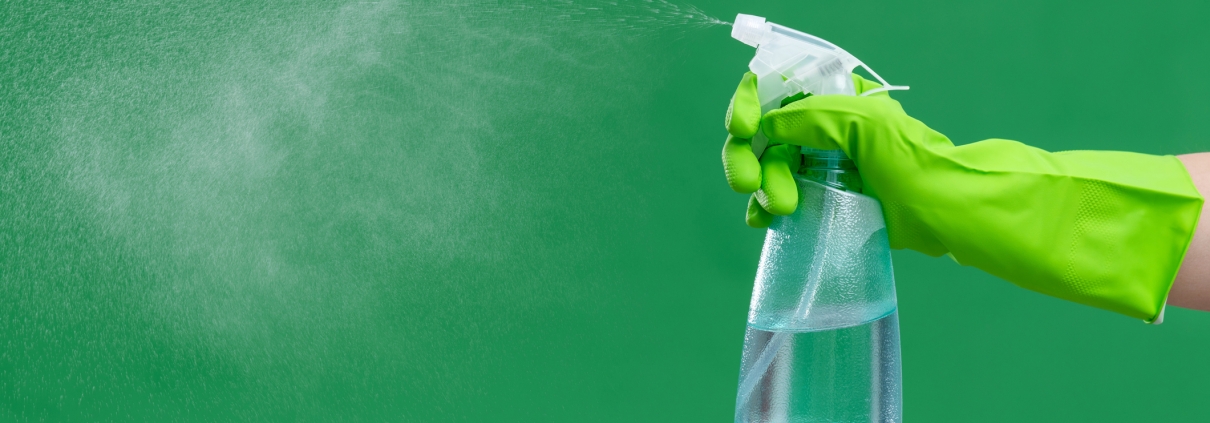The Dangers of These 5 Household Toxins
As consumers, we instinctively trust the products lining store shelves. We expect brands have done their due-diligence and tested the safety of their ingredients. After all, they wouldn’t intentionally sell us a harmful product, right?
Unfortunately, a majority of our personal care products, cosmetics, cleaning products, food items, and more contain chemical ingredients that are largely untested and unregulated. Even worse, these mainstream products contain toxic ingredients known to cause harm to humans.
In the United States, the average person is exposed to more than 100 different chemicals before leaving for work in the morning. These toxins lurk in the products we would least expect, such as hand soap, toothpaste, or lipstick. Exposure to these chemicals is as easy as touching, inhaling, or ingesting them. Through consistent exposure, these toxins slowly build up in our bodies and can cause major health problems down the line.
Chemical exposure has been linked to higher rates of breast cancer, reproductive problems, hormone disruptions, asthma, behavioral changes, and other harmful health issues. Pregnant women (babies) and young children are especially vulnerable to these toxins because their brain and other organs are still developing.
Here are 5 of the most common toxins lurking in our household products and how they can affect you:
Ammonia
Ammonia is extremely common in household cleaners, and people can usually detect it by its noxious odor alone. Ammonia is a prized ingredient in household cleaners because it cleans surfaces without streaking, disinfects surfaces, and cuts through tough grime and stains.
However, ammonia can burn the nose, throat, and respiratory system when inhaled. It can cause corrosive damage to the mouth, throat, and stomach if ingested, and it can severely irritate and damage the skin or eyes upon direct contact. When ammonia enters the body as result of breathing, swallowing, or absorbing it through the skin, it will react with moisture to create ammonium hydroxide, which destroys and damages cells in the body upon contact. Severe exposure to ammonia can lead to blindness, lung damage, and even death.
Commonly found in: window or glass cleaner, bathroom cleaner, multi-purpose spray, carpet cleaners, tile-floor cleaners, furniture polish, oven cleaners.
Bleach
Given its noxious fumes, it shouldn’t be a surprise that chlorine is an equally powerful skin and lung irritant that can cause permanent tissue and vision damage. Many people have grown up thinking of bleach as the perfect household disinfectant. Most don’t bat an eye while using it all over their home. In fact, many people have no problem adding a splash of bleach to other cleaning products, which can potentially create fatal chemical vapors. For example, when bleach is mixed with ammonia, it creates deadly chlorine vapors.
Bleach is used in many cleaning products like laundry detergents to disinfect and remove stains. Direct side effects of bleach include: red, irritated eyes, blurry vision, throat irritation, skin irritation, coughing and shortness of breath. Long-term effects could include stiffness of lungs, damaged mucous membrane, asthma, bronchitis, permanent tissue damage, and hyperpigmentation.
Commonly: found in: laundry detergent, multi-purpose spray, disinfectant spray, bathroom cleaners, and other sanitizing cleaning products.
Formaldehyde
Formaldehyde, a highly flammable, colorless gas, is commonly used as a low-cost preservative and as an anti-bacterial agent. In 2011, formaldehyde was officially classified as a known human carcinogen, yet it was not banned from use. According to the CDC, breathing in and smelling even small amounts of formaldehyde increase people’s risk of developing cancer. People easily come into contact with formaldehyde by inhaling fumes from cleaning sprays or by absorbing it through the skin from laundry detergents.
Long-term exposure to formaldehyde can lead to severe asthma and allergies, death of body tissue, nerve palsy, cancers like leukemia, and low white blood cell counts. Short-term side effects to formaldehyde may include skin irritation, watering eyes, a runny nose, and sudden headaches.
Commonly found in: laundry detergent, fabric softener, dish soap, air fresheners, nail polish, hair straightening treatments, toothpaste, perfume, body wash, and furniture.
Phthalates
Phthalates are a type of plasticizer, which are synthetic chemicals used to make plastics more flexible and durable. Phthalates are also used as a dissolving agent for other chemicals. Phthalates are incredibly common in household cleaners, cosmetics, and personal care products, but they are often hidden in the label under the term “fragrance,” so many people do not even know they are being exposed to them. It is often called the “everywhere” chemical because it is so common.
Many phthalates are known hormone disruptors that interfere with the production of testosterone, altering hormones and regular reproductive function. Continual phthalate exposure has been linked to altered hormone levels, reduced male and female fertility, low birth weights, bad allergies and asthma, and even irregular behaviors in young children.
Commonly found in: lotions, soaps, perfumes, nail polish, hairspray, laundry detergent, dish soap, makeup, fast food, dairy products, and toys.
Parabens
Parabens inhibit microbial growth and, as a result, are often used as a cheap preservative to extend shelf-life in foods, cleaning products, cosmetics, and personal care products. Numerous studies have found parabens to mimic estrogen in the human body. What does this mean? By mimicking estrogen, parabens disrupt normal hormone function and trigger an imbalance that results in the growth of tumors.
Once parabens penetrate the skin, they remain within the tissue and even increase the skin’s sensitivity to the sun, resulting in premature ageing. The long-term effects of parabens are still being studied as well as its link to breast cancer, but it’s safe to say that people should try to avoid paraben exposure if possible.
Commonly found in: shampoos, conditioners, sunscreen, makeup, deodorants, body lotion, facial moisturizer, laundry detergent, other cleaning products.
Reducing Your Exposure
These are only 5 of the most common toxins used out of the hundreds of unregulated chemicals used in our everyday household products. We can’t always control what we are exposed to on a daily basis, but we do have the ability to eliminate many harsh chemicals hiding in our household products by switching to safe alternatives.





Leave a Reply
Want to join the discussion?Feel free to contribute!